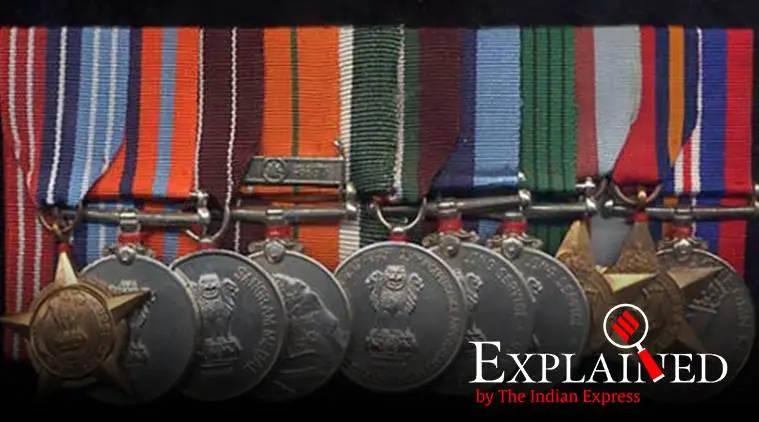Explained: Why next of kin of deceased Army personnel are now allowed to wear medals
Fear has been expressed that the wearer may misuse these medals by wearing them on other occasions too as there will be no check on them and also that a lay person will not be able to distinguish between the difference of wearing medals on left chest and the right.
 These medals cannot be worn as a matter of routine.
These medals cannot be worn as a matter of routine.
The Army has accorded permission to the next of kin of service personnel to wear the medals of their deceased relatives on special occasions. The reason behind the order and the tradition associated with it are explained here.
When did the Army pass instructions about wearing of medals of deceased service personnel and what do these say?
A letter was issued by the Ceremonials and Welfare Directorate of Adjutant General’s branch of Army Headquarters on July 11, 2019, stating that it has been decided that next of kin of deceased service personnel may be allowed to wear the medals earned by their relatives, on the right chest. A distinction has been made with the medals worn by those who have been awarded these as those are worn on the left chest. The letter also says that serving personnel may wear their own medals and the medals of relatives but only while attired in civil clothes.
Why was this decision taken and who have been classified as relatives whose medals could be worn?
The letter mentions that a representation was received from the relatives of deceased ex-servicemen seeking such permission in order to honour the memory of those who had earned the medals. It was felt that this would instil a sense of pride in the second and third generations of the descendants too. A similar practice exists in some other countries too, the letter states. The term ‘relatives’ who’s medals could be worn include spouse, parents, siblings and children.
When can these medals be worn?
These medals cannot be worn as a matter of routine. The instructions explicitly state that such medals can be worn only on occasions where the wearer is present at war memorials, homage ceremonies, cemeteries and funerals. And he or she should also be appropriately attired while sporting such medals.
What is the practice in other countries in this regard?
While there are no formal regulations governing the wearing of medals of deceased relatives on the right chest, it is a common practice in several Commonwealth countries including United Kingdom, Australia and South Africa, especially during the Remembrance Day events associated with the anniversary marking the end of World War One. The British Legion, which is an association for veterans, stipulates that “the medals awarded to a deceased service/ex-service person may be worn on the right breast by a near relative”.
How has the decison been received by the relatives of the veterans and veterans themselves?
While the decision has been largely welcomed by the veterans community there have been some objections over the move. Fear has been expressed that the wearer may misuse these medals by wearing them on other occasions too as there will be no check on them and also that a lay person will not be able to distinguish between the difference of wearing medals on left chest and the right. Traditionalists have opined that medals should be worn by only those who have earned them.
Photos


- 01
- 02
- 03
- 04
- 05




































